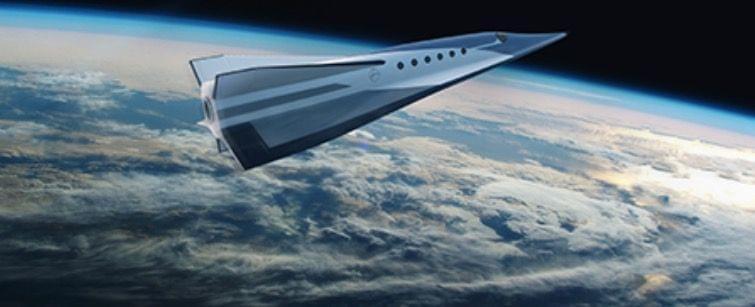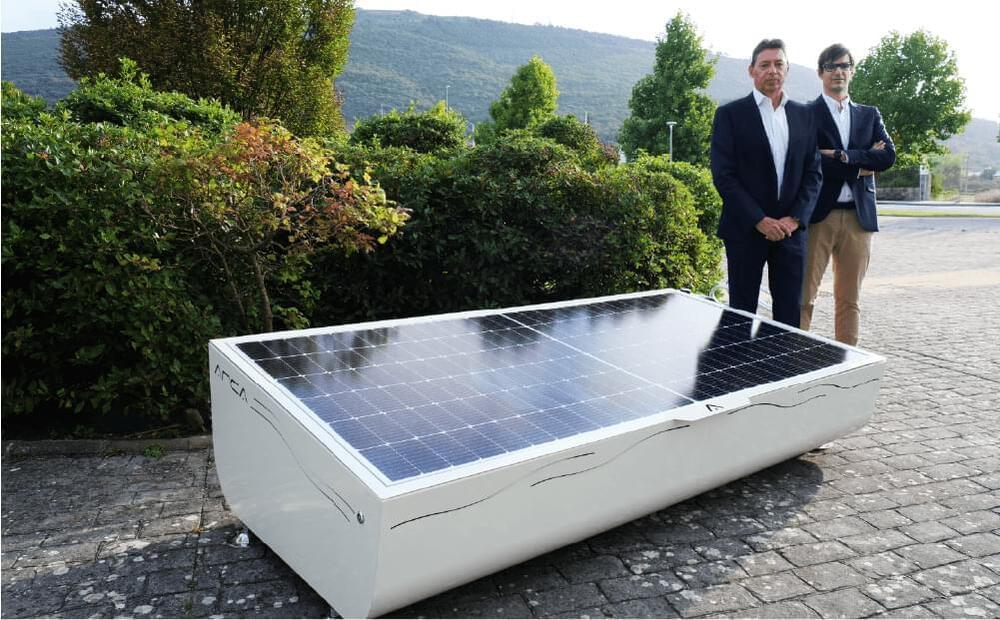Topics include the prospects of technological acceleration, Metaverse development and immersive computing, transcendence and cybernetic immortality, neurotechnologies and mind uploading, outer and inner space exploration, Global Mind and phase transition of humanity, physics of time and information, consciousness, evolutionary cybernetics, Chrysalis conjecture and Transcension hypothesis, Artificial General Intelligence and cyberhumanity, transhumanism and singularity, Fermi Paradox, Omega Point cosmology, Cybernetic Theory of Mind, and more. https://www.ecstadelic.net/e_news/metaverse-news-network-liv…x-vikoulov #Metaverse #Singularity #Transhumanism #Transcension #Futurism #Cybernetics #SyntellectHypothesis #AlexVikoulov
Get the latest international news and world events from around the world.


A Novel ‘Artificial Leaf’ Captures 100 Times More Carbon Than Others
Using less power than a lightbulb. A team of engineers at the University of Illinois Chicago (UIC) has developed a relatively low-cost “artificial leaf” that can capture carbon dioxide at rates 100 times faster than existing systems, bringing us one step closer to the goal of engineering the process of photosynthesis by which plants convert sunlight, water, and carbon dioxide into energy.
Nuclear waste can be very harmful to humans and the ecosystem. Watch how it’s handled in our video.
Here’s What Happens to Nuclear Waste
Nuclear power could be essential to weaning the world off fossil fuels.
Nuclear power is a powerful form of energy that allows us to produce clean electricity. However, the waste it produces is difficult to tackle and is often the reason nuclear power has not become as popular as perhaps it should be. It is estimated that there are currently around 370,000 tonnes of spent nuclear fuel in temporary storage around the world, according to the International Atomic Energy Agency.
Now, the Swedish government has just approved a plan by Swedish nuclear fuel and waste management company SKB to develop a storage facility that will keep the country’s spent and highly radioactive nuclear fuel safe for the next 100,000 years.
Are Tesla’s Record 2021 Profits Enough to Keep It in the Lead?
The company sold roughly one million cars in 2021.
The electric vehicle manufacturer announced yesterday that it made $5.5 billion in profits last year after selling nearly one million cars. That’s six times more than it did in 2020. But even those numbers weren’t enough to reassure investors that Tesla’s future success is a sure thing.
Surprisinglyfell sharply after the announcement because it also disclosed that supply chain problems have been forcing Tesla factories to run below capacity for months. Its 2022 outlook was also short on details about when new factories will come online, according to several analysts. Meanwhile, rival EV manufacturers are on the rise as the might of U.S. and global auto manufacturing shifts momentum into sustainable, electric vehicles.

When And Where To See Elon Musk’s Out Of Control SpaceX Rocket That Will Crash Into The Moon At 5,700 Mph
“This is not ‘SpaceX did something bad’—it’s perfectly standard practice to abandon stuff in deep orbit,” writes McDowell. “This is ‘none of the space agencies care about leaving stuff out beyond the Moon’.”
However, with the age of commercial space industry there’s going to be a lot more junk like this. Something needs to be done. “It’s time for the world to get more serious about regulating and cataloging deep space activity,” writes McDowell. ## Why we need to launch rockets and satellites.
There seems to be a swell of doubt around whether the carbon footprints of rocket launches can be justified in this age of rampant climate change. Attaching the term “space junk” and Elon Musk’s name instantly make it a big and negative story.
Full Story:
When is the SpaceX rocket going to crash into the Moon?
On February 11, 2015 a Falcon 9 rocket from Elon Musk’s SpaceX launched from Cape Canaveral. After sending the Deep Space Climate Observatory (DSCOVR) satellite into an orbit where there’s an unhindered view of the Sun the rocket’s spent upper stage went into a chaotic elliptical orbit of Earth.

Building The Metaverse
The talk about metaverse really went ballistic after Facebook changed its corporate name to Meta and CEO Mark Zuckerberg’s keynote at the Facebook Connect event touted the metaverse as the social networking future. But most of the talk is not really about the true metaverse as envisioned in science fiction and first described in in Neal Stephenson’s 1992 cyberpunk science fiction novel Snow Crash. A true metaverse needs to be an interconnected “Internet” of virtual spaces that are open to many different companies, not a walled garden. It will take an open platform offering access to a shared virtual space to create the true metaverse. And it will also require a level of standardization and interoperability that doesn’t exist today.
In Snow Crash, the Metaverse was a phrase coined by as a successor to the Internet. It was a vision of how a virtual-reality-based Internet might evolve and was heavily influenced by early video games. This version of the metaverse resembles a persistent massive multiplayer online game (MMO). Players would have user-controlled avatars, and there were a social hierarchy, but there was pervasive access and a global scale.
The closest we came to open 3D interoperability was VRML (Virtual Reality Markup Language) back in the 1990s. The HTML approach to creating a metaverse using the VRML standard attempted to create a virtual 3D markup language that could be used to create and link 3D spaces together into one that you could access through a VRML browser. It failed.

Solar-plus-storage autonomous power generator from Spain
Developed in Spain, the Arca system integrates solar panels, power electronics, and energy storage. Arca Lite has a rated power of 490 Wp, and Arca Plus of 980 Wp.
From pv magazine Latam
The Spanish companies Solartia and IED — experts in energy and electronics, respectively — have launched Arca, an autonomous solar power generator described as a robust and low-maintenance system that aims to alleviate energy poverty.
The system integrates solar panels, power electronics, energy storage and prepayment in a compact, robust and simple way, which allows it to be able to supply energy permanently anywhere in the world, according to the manufacturer. The solution is also designed to be installed in any location without qualified personnel.


AI And Optimism: Jim Mellon Wants Us All To Live Longer
There is nothing inevitable about aging, or about its rate. Californian bristlecone pines are believed to live for 5,000 years, and there are long-lived mammalian creatures as well. Some marine creatures do not display any signs of aging at all, including hydra, jellyfish, planarian worms, and coral. Certain human cells have immortal characteristics too. When a woman gives birth, she produces a baby which is “new”. Her “germline” (reproduction-related) cells produce a child with no signs of age.
These and many other considerations combine with the unreasonable effectiveness of modern AI to lead some people to believe that significant advances in longevity are imminent. These advances probably cannot happen without the active participation of the wider pharmaceutical industry, and the acceptance by policy makers and regulators that aging is a disease, not just an unfortunate and inevitable component of the human condition. There is still considerable reluctance among major pharmaceutical companies to contemplate specific anti-aging therapeutic developments. But there are encouraging signs of this reluctance being challenged, especially at Novartis and AstraZeneca.
Beyond the pharma giants, Mellon reckons there are 255 companies which claim to be specifically targeting aging, of which 35 are listed on stock markets. But he thinks that only a minority of them are genuinely working to tackle aging, as opposed to one of the diseases it causes, like cancer, dementia, or heart disease. He likens the state of the longevity industry today to the internet industry of 20 years ago, when it was still in its dial-up phase, and downloading information (or, heaven forbid, images) was like sucking jelly through a straw. And although longevity will have such a massive impact on all of us that you might expect progress to be expedited, Mellon points out that the internet did not have to go through lengthy and expensive FDA trials at every step.